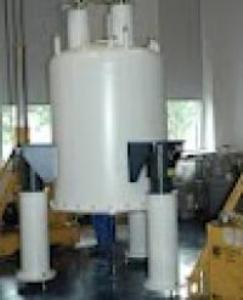A German-made 800 MHz, Nuclear Magnetic Resonance (NMR) spectrometer was delivered at the Texas A&M University. After being flown in on a cargo plane, the US $2.7 million instrument was set up at the university by using a crane to lower it down on an opening in the roof of a building of the biochemistry and biophysics department.
 The 800MHz NMR spectrometer
The 800MHz NMR spectrometer
The NMR is a predecessor of the MRI technique. While MRI is used to obtain human tissue images for diagnostics, the NMR is used to image molecules for research.
The instrument was sourced by Texas A&M University in collaboration with Texas AgriLife Research. The instrument is expected to enhance the university’s capability in structural biology. Structural biology involves the study of structure and movement of macromolecules that are made up of numerous atoms in order to gain insight into diseases and to address biological problems such as waste management and control of plant growth. The university already has access to one 500 MHz and two 600 MHz NMRs. All four will be in operation with the new addition expected to provide quicker and detailed results.
Dr. Tatyana Igumenova, Director of the Biomolecular NMR facility, stated that the new high-field NMR could aid in drug design by determining if a drug candidate attaches itself to a specific enzyme or protein by imaging the binding site. The new NMR has a cold probe or Cryoprobe that maintains the signal detecting components at the temperature of helium gas. The resulting noise reduction improves signal quality. The NMR spectrometer complements the existing techniques of electron microscopy and x-ray crystallography for structural biology studies at the university.